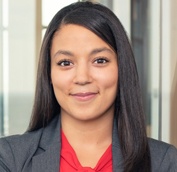A Dollar and a Dream: Student-Athlete Compensation in the Aftermath of U.S. Supreme Court's Alston Decision
Since 2009, the National Collegiate Athletic Association (NCAA) has faced numerous lawsuits from student-athletes alleging that it unlawfully restrained trade by rules on compensating student-athletes.
The latest ruling in NCAA v. Alston, however, has served as the most consequential ruling to the NCAA's amateurism model and resulted in a monumental shift in the opportunities for compensation for student-athletes.
The O'Bannon Decision Laid Groundwork for Subjecting NCAA Rules to Antitrust Laws
In 2009, former University of California, Los Angeles (UCLA) basketball star Edward O'Bannon sued the NCAA and the Collegiate Licensing Company. The crux of O'Bannon's complaint was that the NCAA's amateurism rules, which disallowed O'Bannon from controlling his name, image and likeness (NIL), amounted to a violation of antitrust law. O'Bannon v. NCAA, 802 F.3d 1049, 1058 (9th Cir. 2015). After a fourteen-day bench trial, the court agreed that the NCAA behaved as a monopsony, in that there is only one buyer (the NCAA) for a particular set of goods (the labor and NIL), and that the colleges agree to set the price for those goods at $0. Id. Analyzing the NCAA's conduct under the rule of reason,1 the court found that the NCAA had engaged in anticompetitive conduct that was
subject to antitrust law. Id. at 1079. To remedy this, the court found that the NCAA member schools could offer additional award grants up to the full cost of attendance.2 Id. The court, however, did not believe that payments "untethered to educational expenses" were permissible, as those rules were vital to the NCAA's amateurism model. Id. at 1078-79.
The Alston Decision Deals Serious Blow to Amateurism Rules
After the Ninth Circuit's ruling in O'Bannon, several lawsuits arose that challenged the NCAA's amateurism model; these lawsuits were consolidated into NCAA v. Alston, 141 S.Ct. 2141 (2021). fundamentally, the student-athletes in Alston – current and former student-athletes who played football and basketball – challenged NCAA rules limiting education-related benefits as violating antitrust law, namely, Section 1 of the Sherman Act. Id. at 2147. Ultimately, the Court concluded that these NCAA rules were an unreasonable restraint of trade and suggested other alternatives that would preserve the NCAA's goals of maintaining amateurism. These less restrictive alternatives included (1) allowing the NCAA to continue to limit grant-in-aid to the full cost of attendance; (2) allowing the NCAA to continue to limit compensation and benefits unrelated to education; but (3) enjoining the NCAA limits on compensation and benefits related to education for student-athletes playing football or basketball at Division 1 schools. Id. at 2153, 2164-65. The Court noted that this included "allowing schools to offer scholarships for 'graduate degrees' or 'vocational school' and to pay for things like 'computers' and 'tutoring.'" Id. at 2165. The Court also invited the NCAA to designate what constitutes compensation or benefits "related to education." Id.
The unanimous (9-0) decision, authored by Justice Gorsuch, focused on the rules and analysis applied by the district court in rejecting the NCAA's cap on education-related benefits. The student-athletes did not renew their challenge to NCAA rules limiting non-education-related benefits, which was therefore not examined. Id. at 2154. The Court affirmed the district court's subjection of the NCAA's compensation restrictions to antitrust scrutiny under a rule of reason test. Id. at 2155. The Court rejected the NCAA's assertion that the lower courts should have applied an extremely deferential standard to the NCAA as a joint venture. Id. Skeptical of that assertion, but assuming it nonetheless, the court found that the monopoly power wielded by the NCAA merited a standard rule of reason, fact-specific analysis. Id. The Court then rejected the NCAA's assertion that NCAA v. Board of Regents of Univ. of Okla., 468 U.S. 85 (1984), expressly permitted the NCAA's compensation restrictions, finding the relied-upon language to be non-binding dicta. Id. at 2167. Although the NCAA stressed that, as a "non-commercial" entity focused on furthering the "societally important non-commercial objective of 'higher education,'" it should receive a special dispensation from antitrust law, the Court rejected this notion and directed the NCAA to Congress with such a request. Id. at 2158-59.
Regarding the application of the rule of reason test, the Court held that the NCAA's claim—that the lower courts had improperly required the NCAA to show that its rules constituted the "least restrictive means" when evaluating compensation restrictions—was meritless and that the lower court had only held the restrictions unlawful after finding them "patently and inexplicitly stricter than is necessary." Id. at 2162. The NCAA further contended that the lower courts should have deferred to its definition of amateurism instead of impermissibly redefining it. Id. at 2162-63. The Court responded by stating that "a party can[not] declare a restraint 'immune from § 1 scrutiny'" by relabeling a restraint as a product feature. Id. at 2163. While the Court did generally agree with the NCAA's concern about lower court action inadvertently hindering competition, as opposed to fostering it, it ultimately found that the district court had appropriately weighed this concern when drafting its injunction. Id. Given the continued leeway afforded to the NCAA through the district court's injunction, the Court affirmed the lower court's action to achieve the same pro-competitive benefits using substantiality less restrictive alternatives. Id. at 2164-65.
Justice Kavanaugh's concurring opinion took things a step further, finding that the NCAA's other, unchallenged rules governing student-athlete compensation would also very likely be found to violate the Sherman Act. Id. at 2167. Kavanaugh poignantly attacked the NCAA's primary assertion that the allure of collegiate athletics is that the athletes are unpaid amateurs, and changing that dynamic would diminish the product. Id. Instead, Kavanaugh equated the argument to: restaurant owners cutting the pay of chefs "on the theory that 'customers prefer' to eat from low-paid cooks;" law firms conspiring to limit "lawyers' salaries in the name of providing legal services out of a 'love of the law;'" hospitals capping "nurses' income to create a 'purer' form of helping the sick;" news organizations "join[ing] forces to curtail pay to reporters to preserve a 'tradition' of public-minded journalism;" and movie studios slashing "benefits to camera crews to kindle a 'spirit of amateurism' in Hollywood." Id. at 2167.
Although Kavanaugh expressed skepticism about the lawfulness of the remaining NCAA compensation restrictions, he also raised some difficult questions should courts strike down these other rules. Id. at 2168. How would such a shift affect nonrevenue raising sports? Could some sports secure compensation while others are excluded? How would any compensation regime comply with Title IX? Could a salary cap be instituted to preserve competitive balance? Kavanaugh concluded by acknowledging the important place that collegiate sports have come to occupy within our society and suggests Congress take up reforming antitrust laws or that the NCAA and the student-athletes enter into a collective bargaining agreement similar to those existing among professional athletes and their respective leagues.
The NCAA Responds to Mounting Pressure by Revising Name, Image, and Likeness Policy
On June 30, 2021, nine days after the Alston decision was issued and in light of efforts in several states to enact student-athlete NIL laws, the NCAA adopted an interim policy permitting student-athletes to benefit from their NIL, which went into effect on July 1, 2021. Under this policy, all student-athletes can take advantage of their NIL, so long as their activities are consistent with the laws of the
state where their respective schools are located. To this end, student-athletes are also allowed to engage professional services providers for NIL activities. The NCAA clarified that student-athletes must report any NIL activities to their schools and that the NCAA rules related to pay-to-play and improper recruiting inducements remain in place.
This interim NIL policy contemplates that the NCAA will work with Congress to enact a federal law related to student-athletes and their NIL. In allowing student-athletes to be compensated for their NIL, the NCAA has deviated sharply from its prior views on amateurism, which were met with increasing disfavor in legislatures and courts. Unsurprisingly, schools, students, and others in the market immediately started to capitalize on these new opportunities. Still, as Justice Kavanaugh hinted in his Alston concurrence, there are many lingering questions, and the short- and long-term effects of compensating certain student-athletes remain to be seen.
1. The rule of reason is a three-step test which requires: (1) plaintiff to prove that there is a restraint that produces an anticompetitive effect in a relevant market; (2) defendant
to show evidence of the procompetitive effects of the restraint; and (3) plaintiff to show less restrictive means for achieving the legitimate objectives.
2. In 2014, the NCAA amended its bylaws to permit the largest schools (i.e., the "Power Five") to offer grant-in-aid up to the total cost of attendance at each school, including
tuition, fees, room and board, books, and other related expenses.

